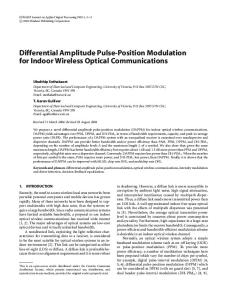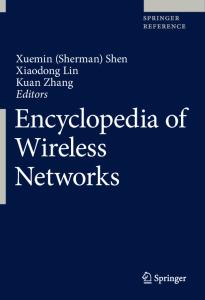Comparing Lateral Modulation and Amplitude Modulation in Phantom Sensation
Phantom Sensation (PhS) is a tactile illusion in which a single sensation is elicited by stimulating two distant points. That sensation moves continuously between the two stimuli by changing the amplitude ratio. In this paper, we compared PhS for two type
- PDF / 80,797,898 Bytes
- 571 Pages / 439.37 x 666.142 pts Page_size
- 92 Downloads / 331 Views
Ilana Nisky · Jess Hartcher-O’Brien · Michaël Wiertlewski · Jeroen Smeets (Eds.)
Haptics: Science, Technology, Applications 12th International Conference, EuroHaptics 2020 Leiden, The Netherlands, September 6–9, 2020 Proceedings
Lecture Notes in Computer Science Founding Editors Gerhard Goos Karlsruhe Institute of Technology, Karlsruhe, Germany Juris Hartmanis Cornell University, Ithaca, NY, USA
Editorial Board Members Elisa Bertino Purdue University, West Lafayette, IN, USA Wen Gao Peking University, Beijing, China Bernhard Steffen TU Dortmund University, Dortmund, Germany Gerhard Woeginger RWTH Aachen, Aachen, Germany Moti Yung Columbia University, New York, NY, USA
12272
More information about this series at http://www.springer.com/series/7409
Ilana Nisky Jess Hartcher-O’Brien Michaël Wiertlewski Jeroen Smeets (Eds.) •
•
•
Haptics: Science, Technology, Applications 12th International Conference, EuroHaptics 2020 Leiden, The Netherlands, September 6–9, 2020 Proceedings
123
Editors Ilana Nisky Ben-Gurion University of the Negev Beer Sheva, Israel
Jess Hartcher-O’Brien Delft University of Technology Delft, The Netherlands
Michaël Wiertlewski Delft University of Technology Delft, The Netherlands
Jeroen Smeets Vrije Universiteit Amsterdam Amsterdam, The Netherlands
ISSN 0302-9743 ISSN 1611-3349 (electronic) Lecture Notes in Computer Science ISBN 978-3-030-58146-6 ISBN 978-3-030-58147-3 (eBook) https://doi.org/10.1007/978-3-030-58147-3 LNCS Sublibrary: SL3 – Information Systems and Applications, incl. Internet/Web, and HCI © The Editor(s) (if applicable) and The Author(s) 2020. This book is an open access publication. Open Access This book is licensed under the terms of the Creative Commons Attribution 4.0 International License (http://creativecommons.org/licenses/by/4.0/), which permits use, sharing, adaptation, distribution and reproduction in any medium or format, as long as you give appropriate credit to the original author(s) and the source, provide a link to the Creative Commons license and indicate if changes were made. The images or other third party material in this book are included in the book's Creative Commons license, unless indicated otherwise in a credit line to the material. If material is not included in the book's Creative Commons license and your intended use is not permitted by statutory regulation or exceeds the permitted use, you will need to obtain permission directly from the copyright holder. The use of general descriptive names, registered names, trademarks, service marks, etc. in this publication does not imply, even in the absence of a specific statement, that such names are exempt from the relevant protective laws and regulations and therefore free for general use. The publisher, the authors and the editors are safe to assume that the advice and information in this book are believed to be true and accurate at the date of publication. Neither the publisher nor the authors or the editors give a warranty, expressed or implied, with respect to the material contained herein o









